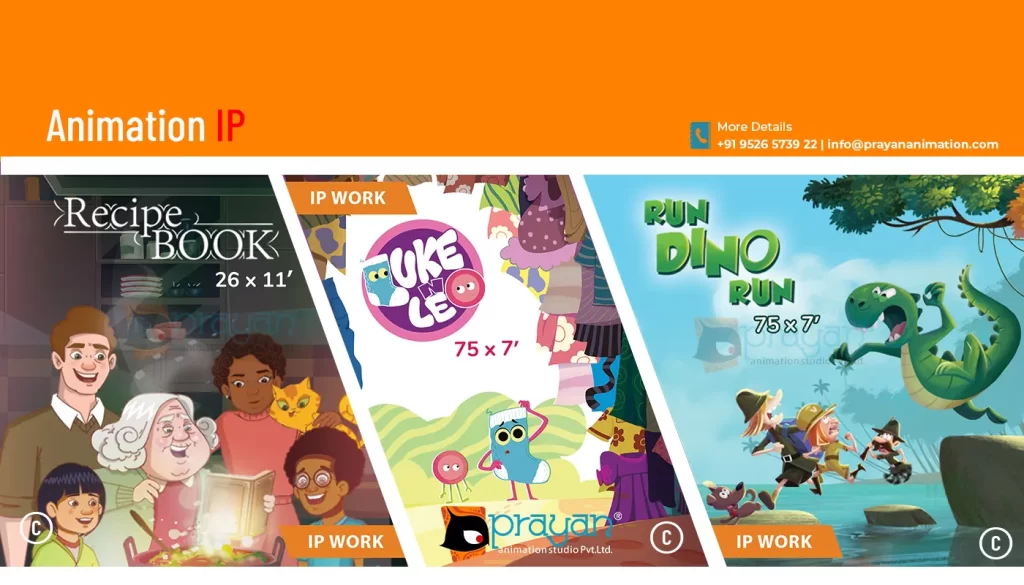
We receive result combining marketing, a creative and industry experience.

Let’s dive into the important points about Animation Intellectual Property (IP):
Animation IP refers to the intellectual property rights associated with animated works, including cartoons, computer-generated animations, anime, and other forms of animated media. These rights are legally protected to ensure creators and owners have control over their works and can benefit from their creations.
There are several types of IP rights that can be associated with animations:
Copyright protection for animation typically lasts for the life of the creator plus 70 years, or a set number of years from the date of publication, depending on the country. Trademarks can be renewed indefinitely as long as they are actively used and defended.

Animation IP is based on originality. Once a creator fixes their animation in a tangible form (like a video or drawing), it is automatically protected by copyright. However, creating derivative works based on existing animations (e.g., spin-offs, adaptations) may require permission from the original IP holder.
Creators and animation studios can license their IPs to other parties for various purposes, such as merchandise, video games, or theme park attractions. Licensing agreements define how the IP can be used and how the revenue is shared.
If someone uses animation IP without permission or in a way that violates the rights of the IP owner, it is considered an infringement. The IP owner can take legal action to enforce their rights and seek damages or injunctions against the infringing party.
Animation IP protection varies from country to country. Creators may need to file for protection in multiple jurisdictions to ensure their rights are upheld globally.
Some uses of animation IP may fall under “fair use” or “parody” exceptions, allowing limited use without permission for purposes such as commentary, criticism, or satire. However, these exceptions are often complex and can vary by jurisdiction.
When multiple parties are involved in creating an animated work, clear contracts should outline each party’s rights and responsibilities regarding the IP. This is essential to avoid disputes later on.
While copyright protection is automatic, registering animation IPs with relevant government agencies can provide additional legal benefits, making it easier to enforce rights and claim damages in case of infringement.
Remember, animation IP is a valuable asset for creators and studios alike, and understanding these points can help protect their creative works and commercial interests. However, IP law can be intricate, and seeking legal advice from an intellectual property attorney is always recommended for specific cases and concerns.